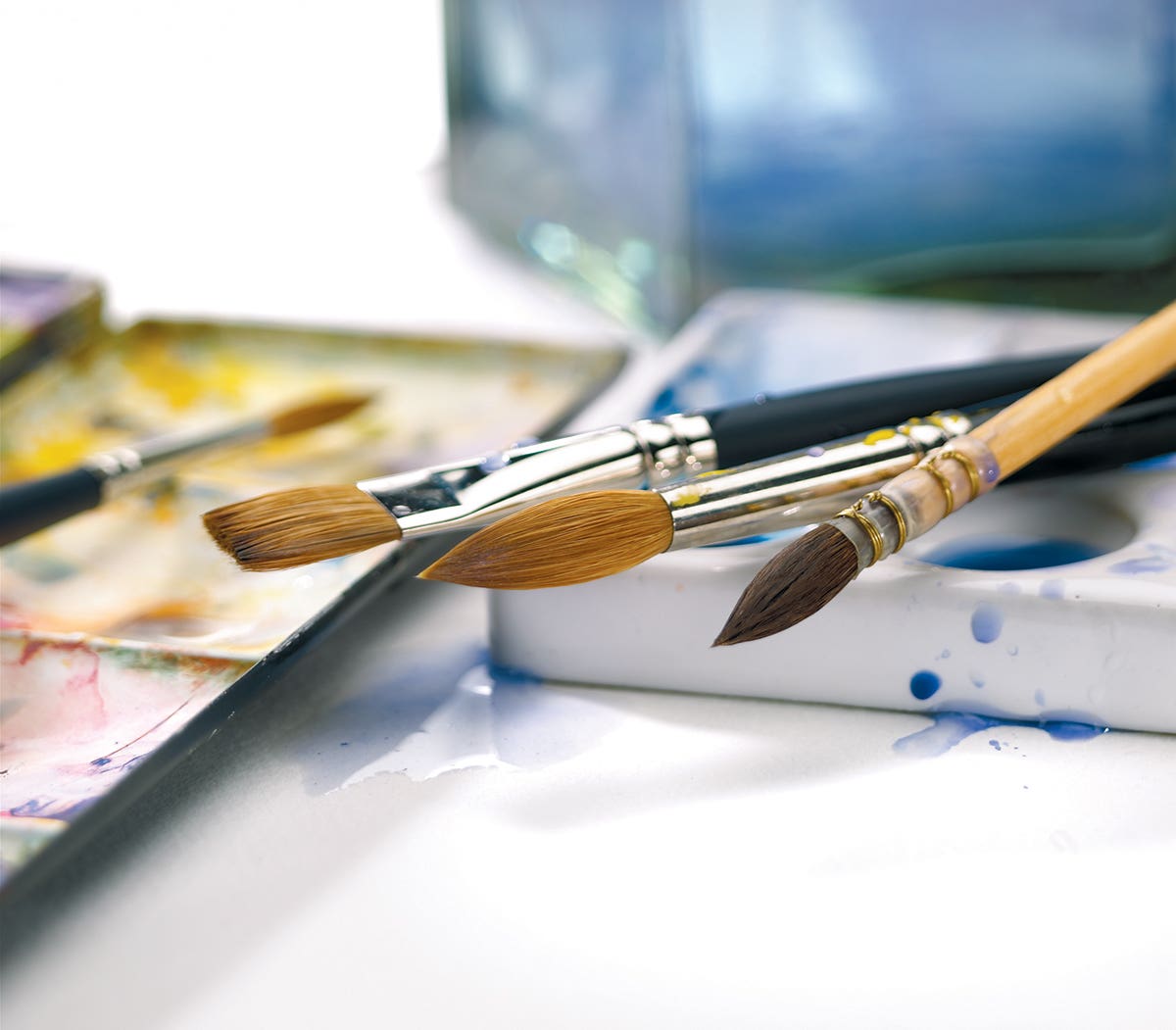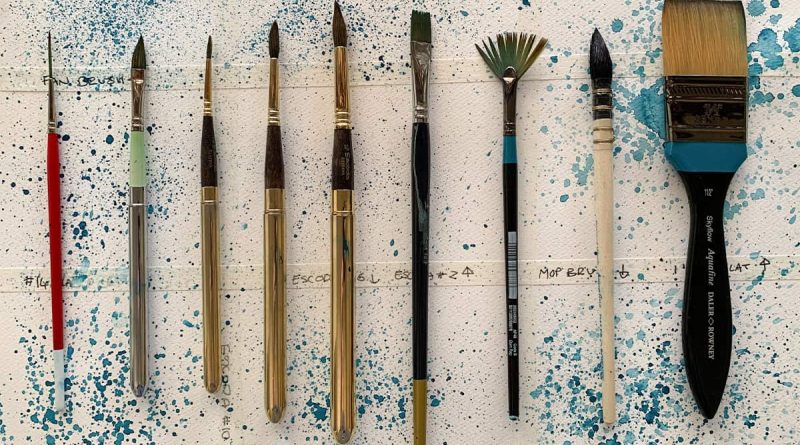Exploration of Paint Brushes and Watercolour Brushes
In the vast realm of artistic expression, the humble paintbrush emerges as a fundamental tool, bridging the gap between imagination and creation. From intricate details to sweeping strokes, the paintbrush plays a pivotal role in bringing artwork to life. This blog embarks on a comprehensive exploration of paint brushes, with a particular focus on the nuanced world of watercolour brushes, delving into their types, characteristics, techniques, and the art they inspire.
Understanding the Anatomy of Paint Brushes:
Paint brushes, in their varied forms, are crafted with specific characteristics to cater to the diverse needs of artists. From the type of bristles to the shape of the brush, each element contributes to the unique capabilities of the tool.
Bristle Types:
Natural Bristles: Derived from animal hair, natural bristle brushes include sable, hog, and squirrel hair. Sable brushes are prized for their softness and ability to hold fine points, making them ideal for watercolours. Hog hair brushes are robust and suitable for heavier paints like oils and acrylics. Squirrel hair brushes are known for their absorbency, making them excellent for washes.
Synthetic Bristles: Made from nylon or polyester, synthetic brushes offer durability and are a cruelty-free alternative to natural bristles. They are versatile and suitable for various mediums, including watercolours.
Brush Shapes:
Round Brushes: Characterized by a pointed tip, round brushes are versatile and well-suited for fine details, lines, and controlled washes.
Flat Brushes: With a rectangular shape, flat brushes are excellent for covering large areas, creating broad strokes, and achieving crisp edges.
Filbert Brushes: Combining the characteristics of round and flat brushes, filbert brushes have a tapered, oval shape, making them ideal for blending and soft edges.
Brush Sizes:
Brushes come in various sizes, numbered from 000 (the smallest) to 20 (the largest). Different sizes cater to different tasks; smaller brushes excel at intricate details, while larger brushes are suitable for broad strokes and washes.
Watercolour Brushes: Elevating Subtlety and Precision
Watercolour brushes, specifically designed for the delicate nuances of water-based painting, possess distinct qualities that set them apart. These brushes enhance the transparency and flow of watercolours, allowing artists to achieve the luminous effects characteristic of the medium.
Sable Brushes:
Sable brushes, made from the fur of the Siberian weasel, are prized for their softness and ability to hold a fine point. Kolinsky sable brushes, in particular, are highly sought after by watercolour artists for their superior quality.
Synthetic Watercolour Brushes:
High-quality synthetic watercolour brushes mimic the properties of natural sable brushes and offer a cruelty-free alternative. They are durable, retain their shape well, and provide a cost-effective option for artists.
Water Holding Capacity:
A crucial characteristic of watercolour brushes is their ability to hold water. Brushes with excellent water retention allow for longer strokes and consistent washes, contributing to the fluidity and luminosity of watercolour paintings.
Point and Snap:
A good watercolour brush should come to a sharp point, allowing for precision in details. The snap, or the ability of the brush to return to its original shape after being bent, is essential for controlled strokes and lines.
Watercolour Techniques: Unleashing the Magic of Brushes
Watercolour painting is a delicate dance between pigments, water, and brushes. Different brush techniques contribute to the myriad effects that make watercolours a captivating and expressive medium.
Wet-on-Wet Technique:
Applying wet paint onto a wet surface allows colours to blend seamlessly. Round brushes with a good water-holding capacity are ideal for this technique.
Dry Brush Technique:
Using a brush with minimal water creates a dry brush effect, adding texture and emphasizing details. Flat brushes or brushes with synthetic bristles work well for dry brushing.
Glazing:
Layering thin washes of colour, known as glazing, can create luminous effects. Soft-bristle brushes with good water retention contribute to smooth and even glazes.
Lifting Off Technique:
Dampening a clean brush and lifting off pigment from a dried area creates highlights or corrects mistakes. Soft brushes with a delicate touch are suitable for lifting off.

Investing in Quality Brushes: A Wise Choice for Artists
Whether working with traditional paints or watercolours, investing in high-quality brushes is essential for artists seeking precision, durability, and versatility. Quality brushes not only enhance the painting experience but also contribute to the longevity of an artist’s toolkit.
Longevity and Maintenance:
Proper care, including regular cleaning and reshaping, prolongs the life of brushes. Quality brushes maintain their shape, ensuring consistent performance over time.
Choosing the Right Brush for the Task:
Selecting the appropriate brush for a specific task enhances efficiency and control. Round brushes for details, flat brushes for washes, and filbert brushes for blending provide a well-rounded toolkit.
Trying Different Brands:
Exploring brushes from different brands allows artists to discover the specific qualities that resonate with their painting style. Some artists may prefer the softness of sable, while others may opt for high-quality synthetic options.
Workshops and Community: Fostering Artistic Growth
Participating in workshops and engaging with the artistic community provides invaluable opportunities for artists to enhance their skills, learn new techniques, and share experiences.
Local Workshops:
Attending local workshops, whether focused on traditional painting or watercolour techniques, exposes artists to diverse perspectives and encourages skill development.
Online Communities:
Joining online forums or social media groups dedicated to painting allows artists to connect with a global community. Sharing work, receiving feedback, and learning from others contribute to continuous artistic growth.
Exhibiting Artistic Excellence: Galleries as Platforms for Showcasing
For artists seeking to share their creations with a wider audience, exhibiting in galleries offers a platform to showcase artistic excellence. Whether using traditional paints or watercolours, the right choice of brushes plays a crucial role in bringing the artist’s vision to life.
Curating a Collection:
When preparing for an exhibition, selecting pieces that showcase the diversity of techniques and the artist’s mastery contributes to a compelling collection.
Artist’s Statements:
Crafting an artist’s statement provides context to the brush techniques employed and the significance of brush choice in the creative process. This adds depth to the viewer’s understanding of the artwork.

